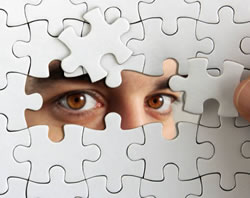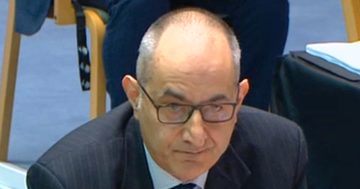Sara London* says that while personality tests are popular hiring tools, there may not be as helpful as they seem.
 If you think a personality test is a great way to assess incoming talent, you’re not alone — as many as 80 per cent of the Fortune 500 companies use personality tests to analyse their talent.
If you think a personality test is a great way to assess incoming talent, you’re not alone — as many as 80 per cent of the Fortune 500 companies use personality tests to analyse their talent.
But clinical psychologist Leo Flanagan, founder of the Center for Resilience and an expert in trauma and performance, explained why personality tests like the Myers-Briggs Type Indicator or DISC test aren’t as helpful as they seem.
Do they work?
Personality tests do have their uses, but hiring individuals isn’t one of them, Flanagan said.
“Personality tests are best used when screening large numbers of candidates for the same position,” he said.
That’s especially true for lower-level positions, like call-center representatives, retail associates, and restaurant servers.
This is because, for those positions, you’re looking for a very specific set of characteristics that fit in with the simplistic nature of the job’s description.
For other groups, however, personality tests don’t necessarily help identify those characteristics, and instead can create conflict.
“When used for a small group of individuals for a unique role there is a strong risk of bias,” Flanagan said.
“For example, senior executives generally work in very high-paced, complex roles.
“When personality tests are administered, it is most often in a quiet, comfortable setting.
“Many firms, particularly in private equity, often find that individual performance in the real world doesn’t match the scoring obtained in a quiet, calm world.”
Regardless of the accuracy of their scores, people still tend to like personality tests.
Flanagan attributed this to the “sense of security and consistency” the results can provide.
How do personality tests change group dynamics?
Large groups are better suited for personality tests because they foster a large-scale company and employee culture, Flanagan said.
But when used in small groups, it can alter the group dynamic, especially if someone is trying to give the test answers that they think their bosses want to hear.
“A personality test can create a common language and understanding of why people in a team do or don’t work well together,” Flanagan said.
“The common language and framework are often useful in creating more collaborative and productive dynamics among team members.”
If you’re planning to use a personality test to onboard someone into a small group or assess a team’s dynamics, you should know that there will be people-pleasers who attempt to present themselves as the ideal employee.
“Many personality tests include a social desirability subscale to screen out people that try to game the assessment,” Flanagan said.
“Unfortunately, this doesn’t work with sociopaths.”
To prevent someone from trying to take advantage of the system on a test, Flanagan recommended that personality tests be used in conjunction with other measurement tools.
“The best use for small groups of people being assessed for a fairly unique position is to combine a personality test with a behavioural interview,” he said.
How do you make personality tests work for your workforce?
Bias can affect not only the setting in which a test is given but the characteristics it’s seeking to identify.
Ultimately, producing accurate personality test results might be more trouble than it’s worth.
“Right now, over 41 per cent of the U.S. workforce has clinical symptoms of anxiety and depressive disorders,” Flanagan said.
“That’s up from 8 per cent in 2019 prior to the pandemic.
“That means that four out of 10 people are perceptually, cognitively, emotionally, and socially impaired.
“Under these circumstances, relying on standardized tests is unwise.”
Instead of worrying about the personalities of potential employees, it might be more productive to improve the mental well-being of the current staff, he said.
“The best approach in this environment is for companies to employ a population health solution to roll back the anxiety and depression impacting their workforce,” Flanagan said.
“We can develop the resilience of a workforce based on hard neuroscience [using] pre- and post-assessments of burnout and resilience, then focus promotions internally where you have a good sense that people are not impaired.”
Once you’re able to aid your existing workforce in their mental health struggles, you may not even need to go outside of your company for new talent.
If you do, there’s a good chance you’ll be dealing with newcomers who are impaired by anxiety and depression.
“When you go outside to hire in this environment you are facing a 40 per cent probability that people you recruit are impaired,” Flanagan said.
“So it’s better to work with what you have internally.”
*Sara London is a freelance author and novelist.
This article first appeared at theladders.com.











